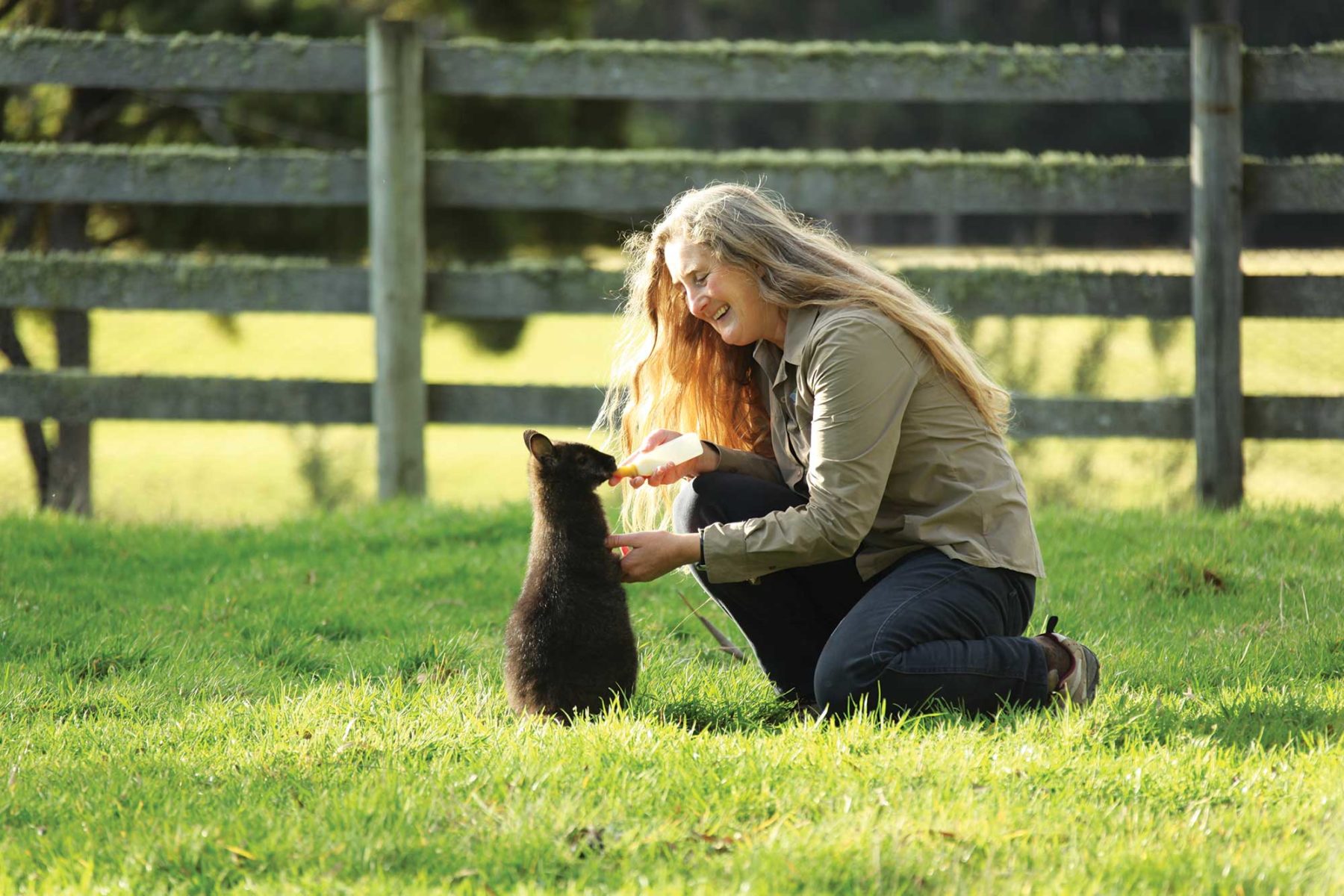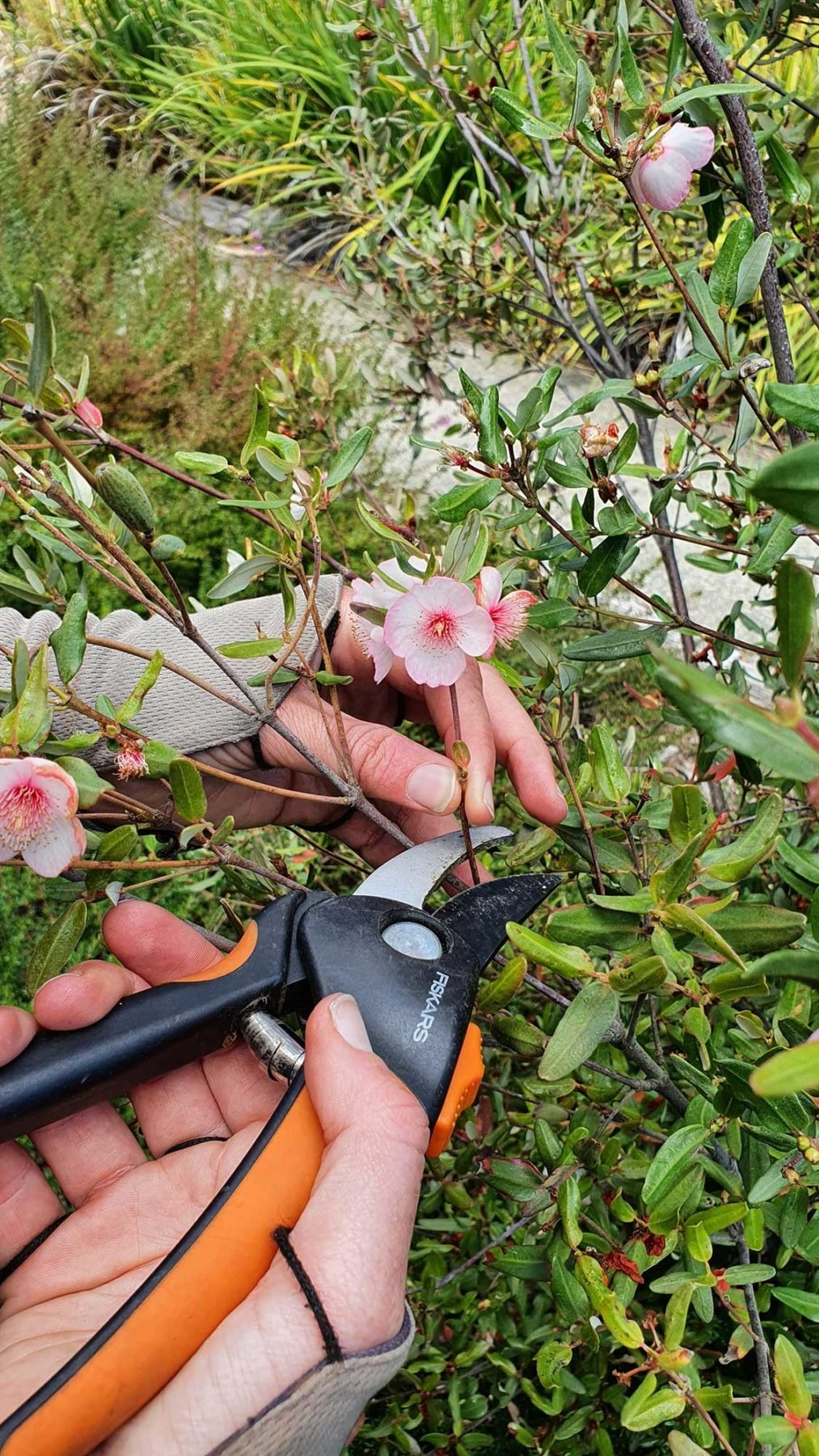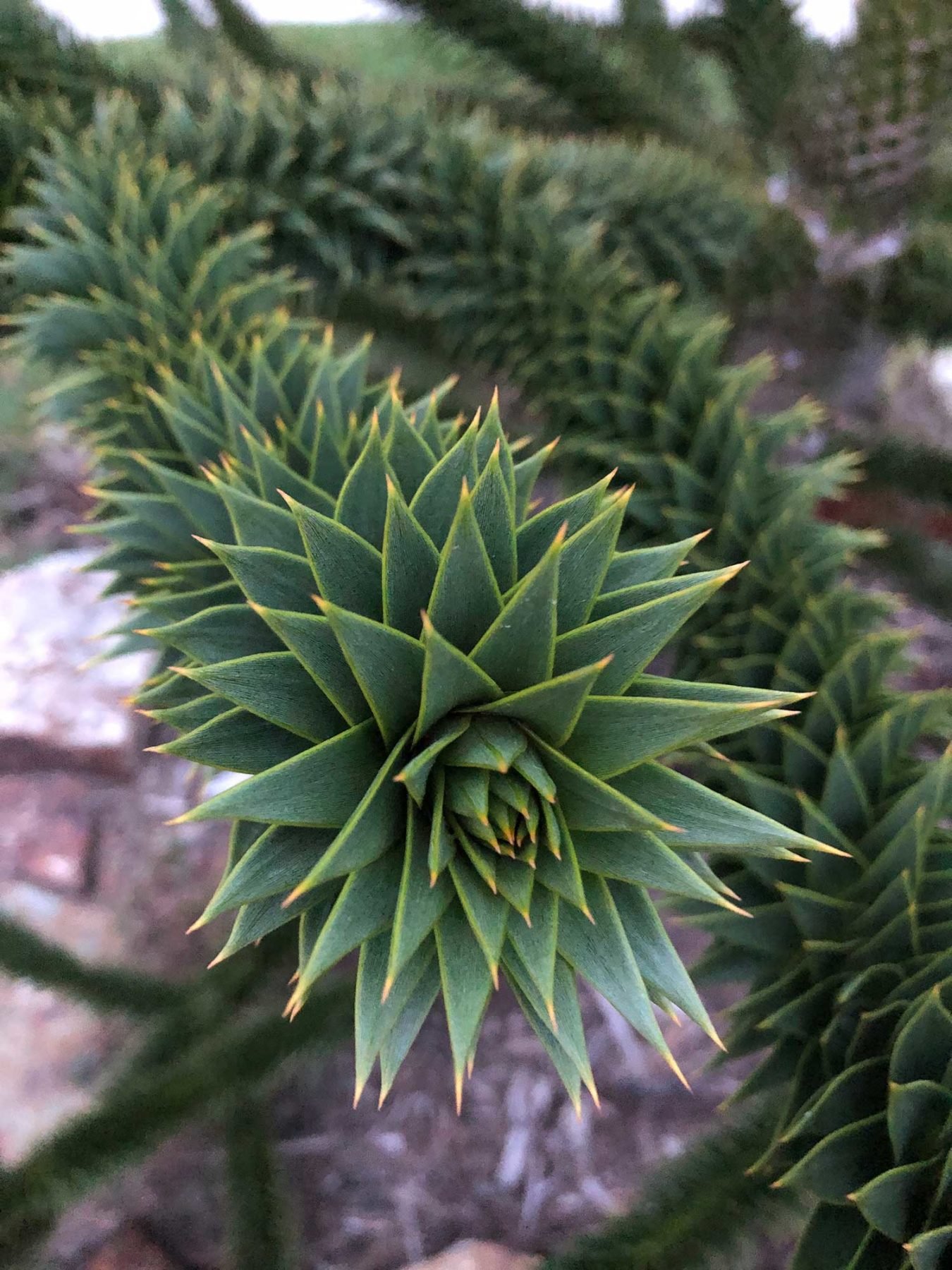Explore the ‘Jurassic Garden’ at the bottom of Australia

IT STARTED AS a seed of an idea. Wouldn’t it be cool to have a couple of plants from different parts of the world to show the Gondwanan connection, biologist Dr Tonia Cochran wondered as she began planting a garden of ancient plants on her Bruny Island property.
A decade later, Tonia’s Jurassic Garden has flourished into an extraordinary repository of primeval plant genes – a botanic garden of global significance. It recently became the only Australian recipient of a prized US grant that supports the preservation of important plant genomes in living collections around the world.

Tonia bought her 600ha island property on Bruny Island, just off Tasmania’s east coast, while she was working for the Australian Antarctic Division during the 1980s and ’90s. The land supported a mix of farmland and wet sclerophyll forest and she named it Inala, an Indigenous word meaning “peaceful place”.
Being a keen environmentalist, she combined weekend farming there with improving habitat for wildlife, notably the endangered forty-spotted pardalote and swift parrot, and she encouraged neighbouring farmers to do the same. Inala is now a private wildlife haven that Tonia has protected with a conservation covenant.
Hoping to earn a living from her picturesque island home, while also rehabilitating injured wildlife, Tonia began during the late 1990s to attract paying visitors with a tourism package that included accommodation, a property tour, and an Antarctic slide night. With all 12 of Tasmania’s endemic bird species in evidence at Inala, including the endangered pardalote, the package proved very popular with birders.
That led to Tonia establishing Inala Tours, an ecotourism operation that specialises in small-group birding and nature tours that have and promote an ethos of wildlife protection. “Conservation underpins everything we do,” Tonia explains.

Demand grew, and these days, almost 30 years on, Tonia and her specialist team of wildlife and environment experts lead tours across Australia and the world, including for Australian Geographic.
Tonia regularly referred to the “Gondwanan connection” during her tours, and longed to demonstrate the concept through a public education facility, using the plant equivalents of dinosaurs. She wanted to show, she explains, “actual examples of species with common ancestors from landmasses now separated by huge distances”.
Circumstances aligned in 2012. She sold the last of her stud cattle, met a plant collector specialising in Gondwanan species, and, at about the same time, the Australian government was offering dollar-for-dollar funding for innovative tourism projects in regional areas. The concept for her Inala Jurassic Garden and Nature Museum blossomed.
Tonia has professional expertise in zoology, botany and marine biology. But at that time her gardening experience was limited to collecting cactuses as a child, growing a few Australian natives and nurturing carnivorous plants on her desk. However, with her interest piqued, her insatiable thirst for knowledge kicked in.
“It was a real adventure researching Gondwanan species online,” she recalls. “I became hooked as the story unfolded.” She investigated thousands of species, their preferred climatic conditions and soil requirements, which only raised more questions: What constitutes a Gondwanan taxon and how should the garden be laid out?
Funding was granted in 2013 and her inner collector took over. She’s been collecting fossils, shells and gems since she was 10, and after 20 years in boxes, they’re now also on display at her Nature Museum, built adjacent to the Jurassic Garden. “I cannot for the life of me stay within the bounds of just a few,” she says, laughing. “I’d see a species and think, I’ve got to have that one!”

As landscaping commenced on a 2ha paddock using locally sourced Jurassic-aged dolerite boulders, Tonia narrowed down the plant selection.
She decided to design and display the garden by species, rather than country. In that way similarities between specimens from different areas would be more apparent and their soil requirements similar. Each plant was labelled and catalogued, and detailed cultivation notes recorded.
Inala Jurassic Garden and Nature Museum opened in 2014, but, Tonia admits, “it looked more like a cemetery than a garden”, with plant label posts overshadowing seedlings. However, with strategic planting creating micro-habitats and species-tailored watering and fertilising, plants have since thrived beyond expectations, with very few losses – although each of those was taken to heart. “They’re pretty much all my babies,” Tonia confesses.
Burgeoning trees NOW stretch skywards like lanky teenagers above cherubic shrubs. Wollemi pines flaunt their fertility, dangling decorative baubles of male and female cones.
The scaly, prehistoric-looking limbs of a monkey puzzle tree from the South American continent twist in gangly awkwardness, while a kauri pine exudes the majesty of its future maturity. Fountains of puce cordylines drip strappy, red-toned leaves above golden grassy iris, and blushing pink leucadendrons harmonise with brooch-like blooms of neighbouring proteas. A damp curry aroma drifts from microbial fungi and frogs croak hypnotically.
As 700 species from more than 50 plant families thrived in the garden, Tonia concentrated on conservation. “I thought it would be cool to turn the garden into a bit of an arc,” she says, “to have insurance specimens of plants that aren’t doing well in the wild.” Inspired, she registered in 2019 with Botanic Gardens Australia and New Zealand, the peak body representing botanic gardens in this part of the world.
After realising that Inala had more than 100 species not represented in the Global Genome Initiative for Gardens (GGI-Gardens), Tonia applied for a grant through its joint awards program with the United States Botanic Garden (USBG). GGI-Gardens is a program that preserves Earth’s genomic biodiversity of plants through the sampling of living collections from the world’s botanic gardens.
The executive director of USBG, Dr Saharah Moon Chapotin, explains that the awards program is to “ensure critical plant genomic information is preserved for future research, as plants across the globe face continued threats like climate change and loss of habitat”.
Inala Jurassic Garden is among just 14 gardens worldwide, and the only one from Australia, to receive a grant to fund a collection of genetic samples and the preparation of voucher herbarium specimens to be entered on the Global Genome Biodiversity Network (GGBN) Genetic Sequence database.

It sounds like high-tech botany, but requires collection and preparation techniques that use old-school methods. “A voucher specimen is a sprig of foliage 20–30cm long that hopefully has a flower and/or seed pod attached,” Tonia explains. “This is pressed between layers of newspaper in a plant press and frozen to ensure there are no viable pests and diseases on it. It’s then mounted as a herbarium specimen on archival paper. We also collect a piece of foliage, which is placed in an envelope and dried in silica gel to retain the genetic material. This can be stored long term by periodically replacing the gel as required.”
The grant has had its challenges. Specimens must be housed in a GGBN facility, and in Australia that would usually mean the Canberra-based Australian National Herbarium, but it wasn’t able to accept them due to its workload. Wanting to keep the specimens in Australia, Tonia organised for Inala Jurassic Garden to join GGBN in its own right and negotiated permission for the specimens to be stored at the Tasmanian Herbarium, in Hobart.
The grant, which was issued in February and expires in December, is geared to the Northern Hemisphere summer, meaning Tonia and her Inala team member Dr Catherine Young had to collect as many specimens as possible before winter, when many species are not in flower. It’s meant limited time to collect and catalogue the balance.
“It takes much longer to gather, press, mount and document each specimen than one would imagine,” Tonia says. “It’s a massive job because we have 110 species in 44 genera and 13 families to prepare.” She fears they will run over time, and therefore funding, before they finish. But with Tonia’s irrepressible enthusiasm for conservation and research, that seems unlikely. “It has to be partly a labour of love,” she says, “and I’m fine with that.”





